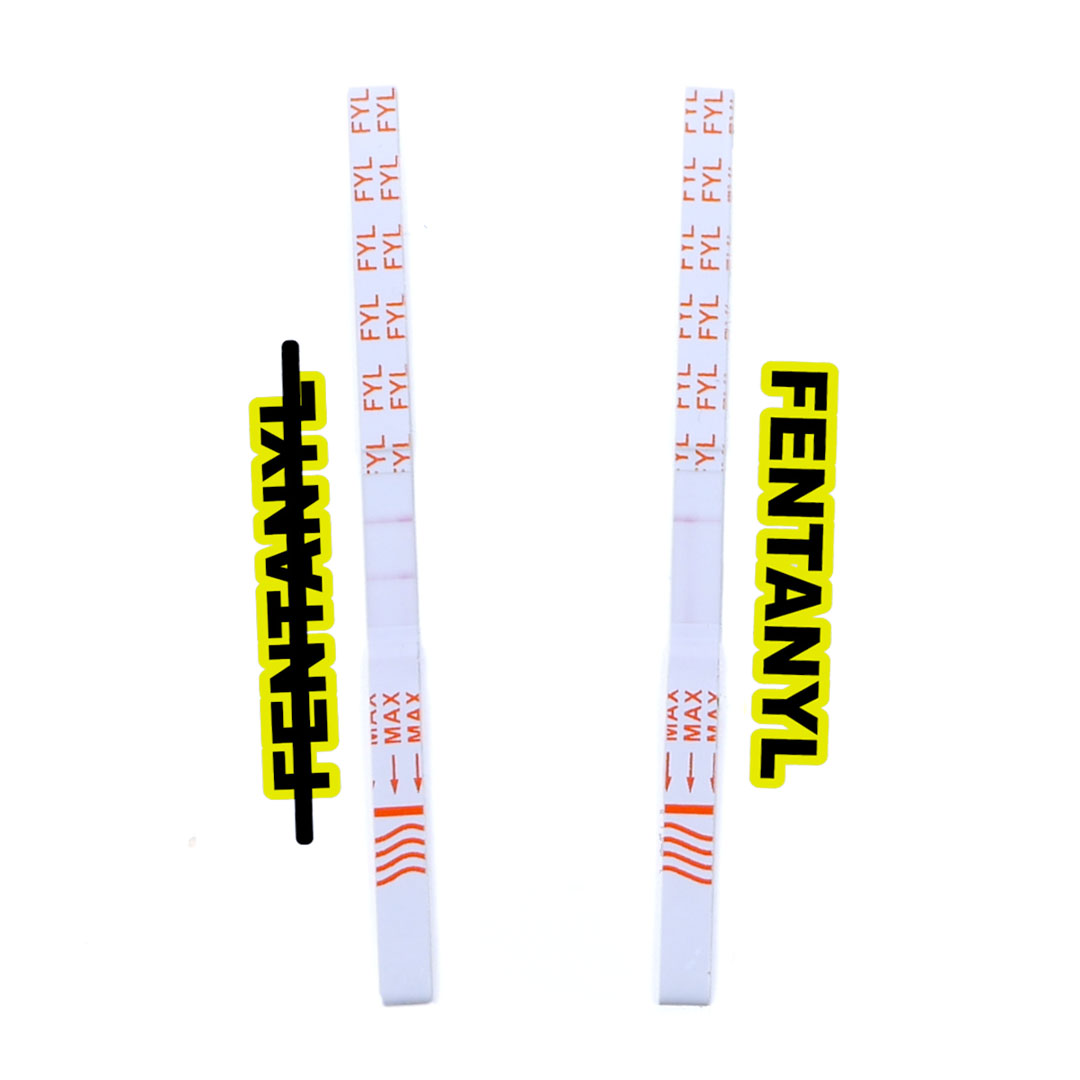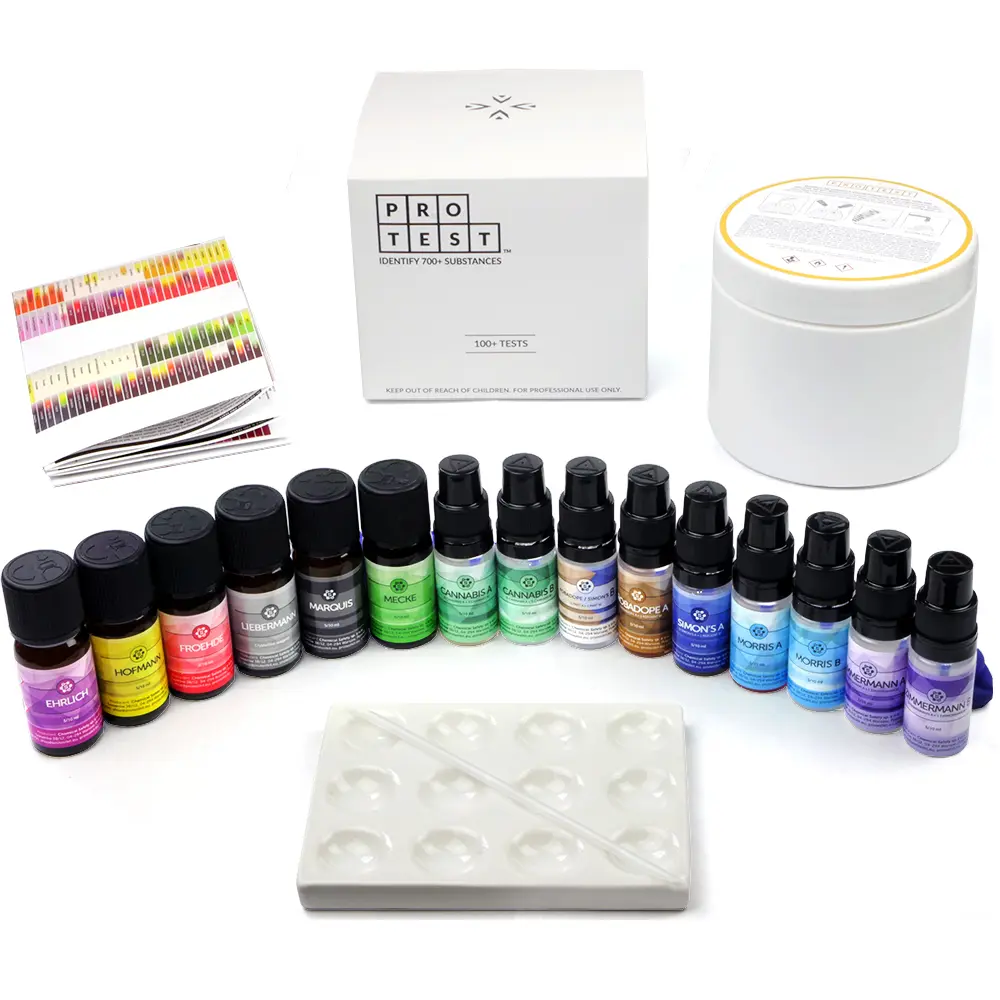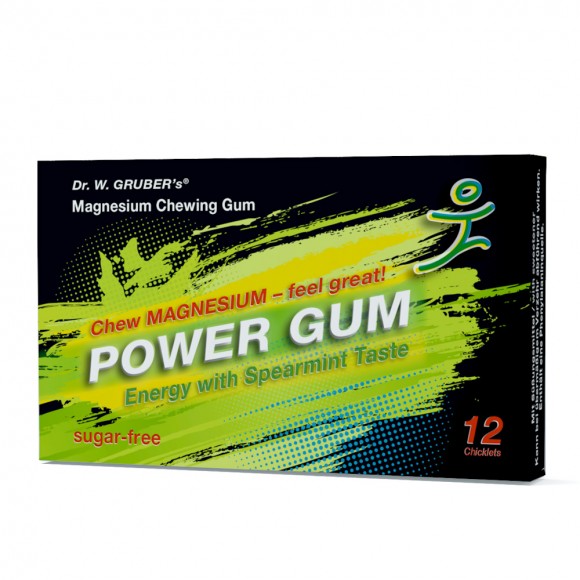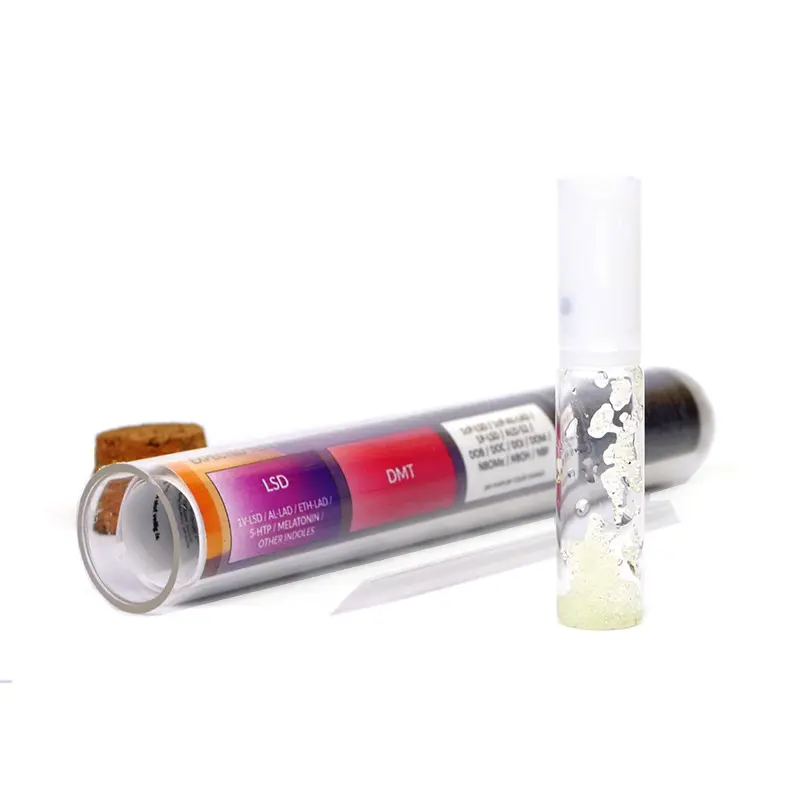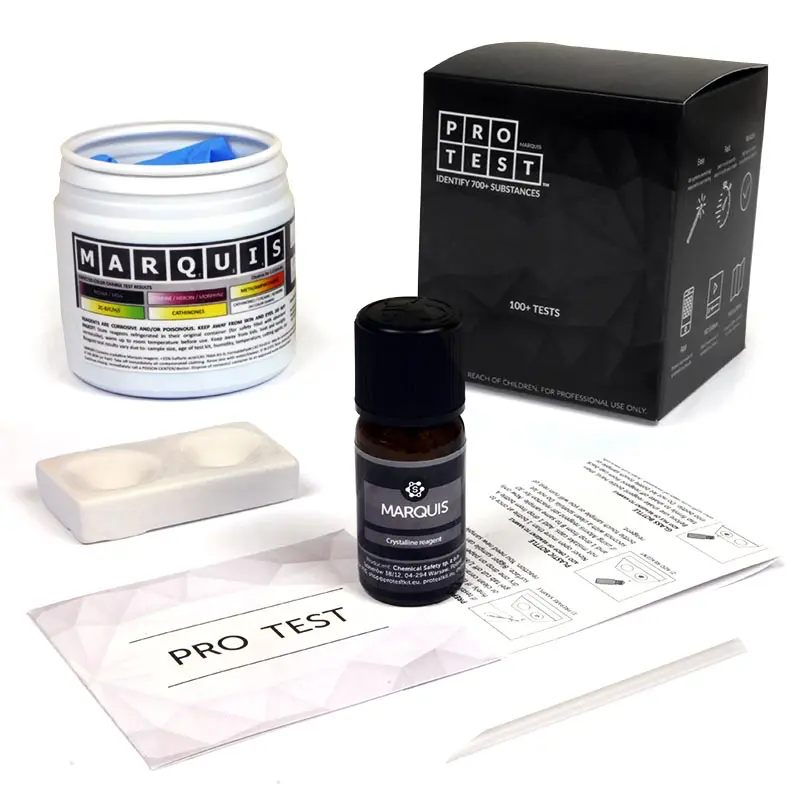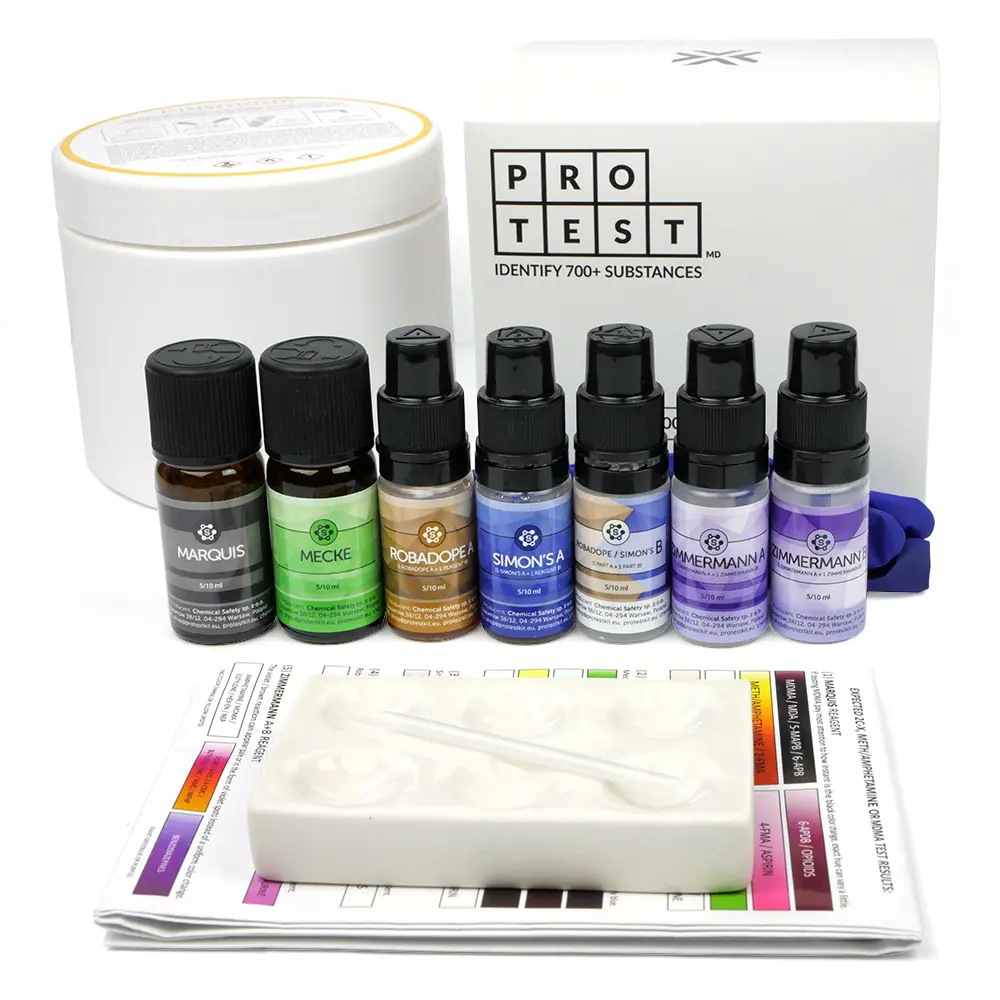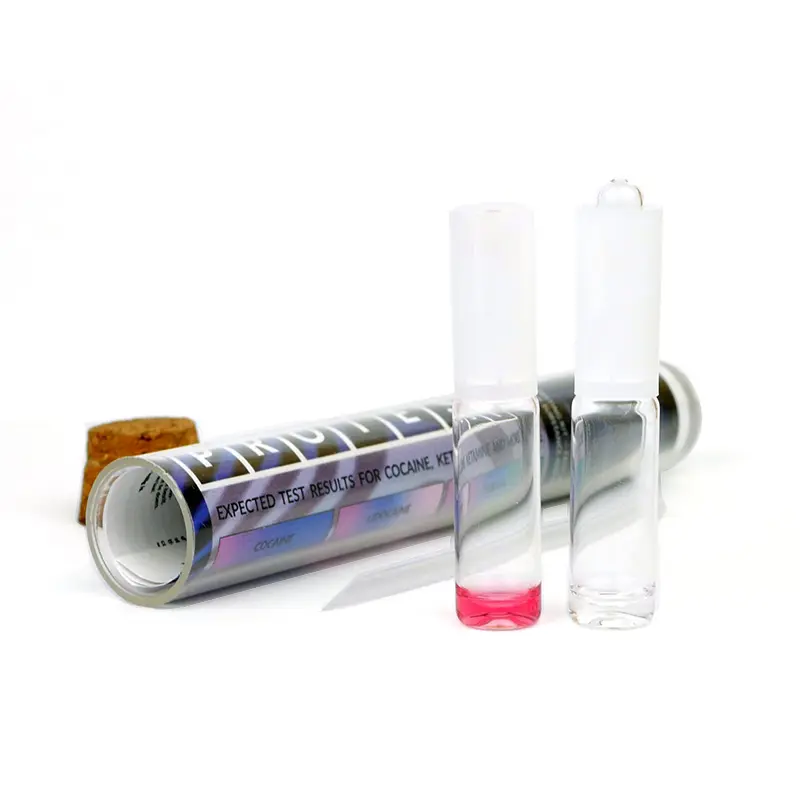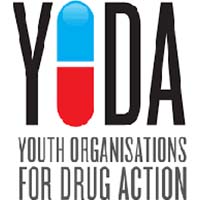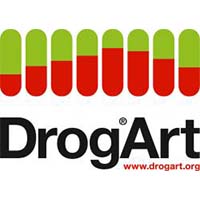Drug test kits –
Drug purity testing kits


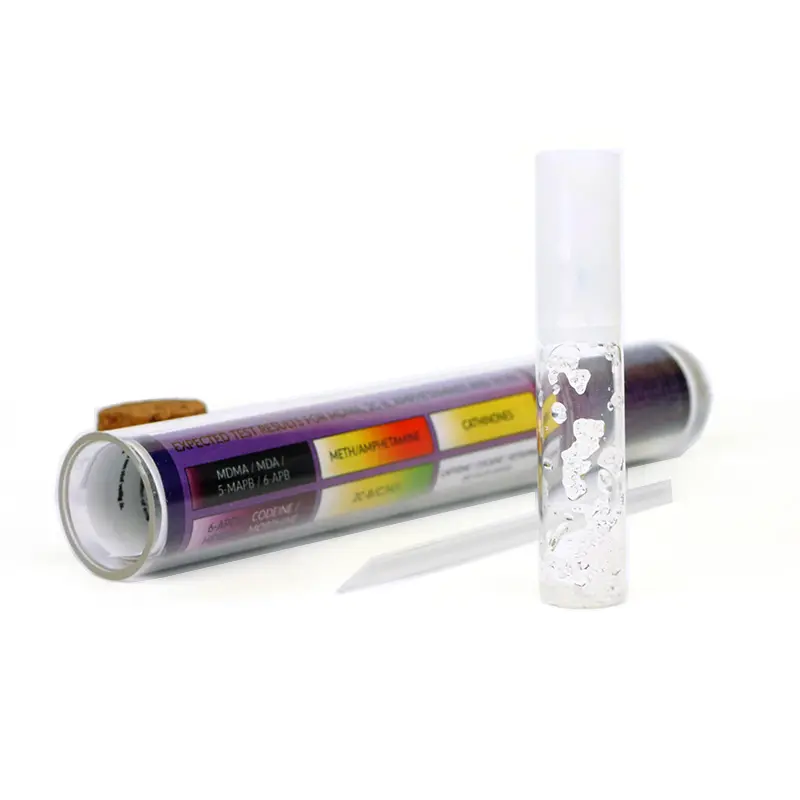

POPULAR
Harm reduction
The best way to avoid substance risk is to avoid drug use but that is not always possible. What always helps is nonjudgemental support and tools to improve safety – such as reagent test kits.
After years of research we are proud to present tests for over 800 psychoactive substances. Your safety deserves the best drug testing kit.
Frequently Asked Questions
-
PRO Test kits help identify a substance and estimate it’s purity using just a tiny sample.
We offer both qualitative and semi-quantitative presumptive substance analysis test kits for MDMA, LSD, THC and 800+ other substances. Most of PRO Tests consist of colorimetric reagents similar to those used by the police, simple chemicals that change color upon contact with even trace amount of another substance. Reagents can be paired with TLC (Thin Layer Chromatography) kits to discover all ingredients and estimate amounts (potency). All PRO Tests are non-medical products, with the exception of repurposed fentanyl test strips.
For all PRO Tests you can find how-to videos (on product pages and Videos page), reference results web app and instructions (on product pages or in a booklet, also available as PDF both for reagents and for TLC.
QUALITATIVE TESTS
Those are mostly single-use / multi-use reagent that can indicate PRESENCE, but not QUANTITY. Mixtures can be detected with reagents only if adulterant causes a darker color change than the expected substance. To detect all ingredients and estimate their amount pair reagents with a TLC purity test kit. With reagent tests you can:
1) Detect presence of a substance or confirm if it is not present at all
2) Detect most common adulterants even if the expected substance is also presentMultiple reagents are required to detect adulterants and increase analysis precision because there are more substances than colors.
Fentanyl tests strips on the other hand, if used correctly, can easily detect fentanyl even in the presence of other compounds.
All of the individual qualitative tests that we offer are: Cannabis (4-AP), Ehrlich, Froehde, Hofmann, Marquis, Mecke, Morris, Liebermann, Robadope, Simon’s, Zimmermann / Beam, TLC cannabis dye and fentanyl test strips. Reagents Mandelin and Scott have been discontinued and replaced by superior Morris reagent.
SEMI-QUANTITATIVE TESTS
These are the TLC tests to estimate NUMBER and QUANTITY of ingredients.
TLC purity tests separate a sample into different substances and also help estimate quantity. TLC tests don’t identify substances alone (unless you have an already confirmed reference sample) and work best paired with at least 1-2 reagent tests. At the moment you can precisely (with 10% error margin) estimate amount of cocaine, MDMA, THC, CBD and discover number of ingredients in 800+ other substances.
-
If you are new to drug checking we recommend one of our tailored per substance single-use tests (for 5.9€ with FREE worldwide delivery) or multiple-use test kits (about 20€ for 100 uses of several different reagents with free express shipping starting at 100€). If you want to know all ingredients and estimate potency add also a TLC purity test kit.
Reagents can indicate PRESENCE, but not QUANTITY. Adulterants can be detected with reagents only if they cause a darker color change than the expected substance. To detect all ingredients and estimate their amount pair reagents with a TLC purity test kit.
- Cannabis (4-AP) – main test for THC / CBD, helps rule out synthetic cannabinoids
- Ehrlich – main test for all indoles, e.g. lysergamides and tryptamines but also 5-HTP and more, secondary test for cocaine
- Hofmann – main test for lysergamides and tryptamines, more precise but slower than Ehrlich
- Froehde – main test for most powders, secondary test for ketamine and amphetamines, long shelf life
- Liebermann – main test for most powders, secondary test for cocaine (detects levamisole)
- Marquis – main test for most powders, secondary test for ketamine, mephedrone and psychedelics
- Mecke – main test for most powders, secondary test for cocaine, ketamine and mephedrone
- Morris – main test for cathinones, cocaine and ketamine, can tell apart some novel dissociatives
- Robadope – main test for primary amines, e.g. MDA, amphetamine or PMA
- Simon – main test for secondary amines, e.g. MDMA, meth, mephedrone, methylone or PMMA
- Zimmermann / Beam – main test for cathinones and benzodiazepines in geneal, detects also CBD
Reagents Mandelin and Scott have been discontinued and replaced by superior Morris reagent.
Fentanyl Test Strip to detect fentanyl, even if it is mixed in another substance.
To discover all adulterants and quantity pair reagents with a TLC Purity Test Kit. TLC tests enable you to separate sample into different substances and estimate quantity. TLC Purity tests alone don’t identify substances and are best paired with 1-2 reagent tests.
To test cannabis, we recommend the TLC Cannabinoid PRO Test. It doesn’t require additional reagents if you know whether your substance is THC or CBD dominant and shows all cannabinoids present and their ratios. A good combination or alternative is the CBD/THC Reagent Test Kit which can confirm whether sample is CBD or THC dominant, can rule out synthethic cannabinoids and helps compare CBD content of similar samples.
For all PRO Tests you can find how-to videos (on product pages and Videos page), reference results web app and instructions (on product pages or in a booklet, also available as PDF both for reagents and for TLC.
-
PRO Test kits will easily last you multiple years if stored correctly.
- Single-use reagents last at least 3 years before any deterioration. Refridgeration not required. Keep out of sun in a cool dark place.
- Single-use test strips last at least 2 years. Can not be frozen. Keep out of sun in a cool dark place.
- Multiple-use reagents last at least 2 years. Store in a standing position in a cool dark palce, fridge is best. Warm up for 3+ hours before use.
- TLC tests do not expire, however we recommend to also keep them out of sun in a cool dark place.
-
Yes, test kits are 100% legal and safe to purchase. To ensure maximum privacy we encourage you to pay with a cryptocurrency and order to a friend. Customer data is deleted automatically.
All our reagent bottles are shipped tightly packed in a plastic jar filled with hygroscopic vermiculite for your safety. Vermiculate is completely safe and will absorb any spills, however remember to always wear gloves when handling reagents. Avoid fumes and use protective eyewear if available.
-
Yes, all packages are sent in plain envelopes or boxes. We do not sign with our full brand name, but with our company name abbreviation “C.S. sp. z o.o.” instead. If you are worried what to tell your roommates, if required it’s best to honestly admit that you want to keep your friend safe. We highly recommend ordering to a local DPD Pickup Point, although in some countries (such as Germany) pickup might require an ID.
Gift wrap available. Keep nosy roommates away from your purchase.
Ultra-stealth delivery available – upon customer request in the checkout notes we will remove all drug-related printouts from inside of package.
-
Brown or grey particles are vermiculite, hygroscopic safe substance used to absorb any spills in case of damage in transit. It can look like wood chips or sand.
Crystals inside glass bottles are normal, it’s the new and improved reagent formula. Read more in our blog post.
-
Dispatch:
All DPD orders placed before 10:00 GMT are shipped on the same day from Monday to Friday, excluding holidays.
All mail orders are shipped on Tuesday and Friday, excluding holidays.
Delivery options:
- Personal pickup – available in Warsaw, Poland
- Priority Mail – starting at 5,00€ – for single-use kits or non-EU orders
- Express: DPD / DPD Pickup Points (Carbon Neutral) – starting at 11€+, available only in Europe
We recommend to take advantage free EU express delivery option by placing an order above 100 euro (if needed consider ordering with a friend).For legal and safety reasons we do not mail any TLC testing liquids. All dangerous liquids products are delivered by a safety compliant courier (EU only) to ensure secure and express delivery.
Delivery time:
Please note that all delivery dates are estimated by the shipping companies, not guaranteed.
- Mail usually takes 2-5 work days, however please allow up to 21 days after shipping for your package to arrive.
- DPD is usually delivered within 2-5 days. Please follow the tracking and call relevant shipping company in case of any issues.
Denmark:According to section 29 of Danish Executive Order on Classification individuals are not allowed to import toxic mixtures. Consider getting single-use tests as samples or if ordering as a company send an email to testy at protestkit dot eu.
Russia & Belarus:In protest against Russian invasion in Ukraine we do not sell our products to Russia and Belarus.We donate 5% of profits to Polish Humanitarian Action in Ukraine. Slava Ukraini!United Kingdom:In regard to partnership with reagent-tests.uk we only sell to the UK the particular reagents which are unavailable at rt-uk website. -
Yes, we offer:
- Free non-tracked priority air mail for all single-use reagent test orders
- Free express courier* shipping for all orders above 100€ (mutually exclusive with discount codes)
*If your order exceedes 100€ but does not contain any reagent tests we will ship it by tracked priority air mail.
-
We do ship all our products worldwide except for TLC liquids.
-
- Cash (in person)
- Bank transfer to “C.S. sp. z o.o.”
- Przelewy24 (Visa, MasterCard, Google Pay)
- Zonda (Cryptocurrencies BTC, BCC, BTG, ETH, LTC, LSK, Dash, XRP, ZEC, TRX, DOGE)
-
After placing an order, our automatic e-mail system generates and sends you all the details, including tracking link as soon as it is available. If you don’t see a new message in your inbox, please make sure to check your spam folder. Most orders are shipped in 1-2 working days since payment confirmation.
-
We accept returns for 30 days after purchase if the product is not used.
We refund full product cost for any returned item. We do not refund shipping costs for orders shipped to an address passed on by a customer. Please double check you address before ordering. Delivery companies unfortunately are not obliged to call before attempting delivery. Keep an eye on tracking and in case of any issues call your local delivery company immediately.
Refunds for purchases made using cryptocurrencies are only available in USD, EUR or PLN via bank transfer.
-
Orders
You may write an e-mail to shop [at] protestkit.eu or use the contact form.
Testing
Ask at testing [at] protestkit.eu or use the contact form. Feel welcome to encrypt your message using a website like https://onetimesecret.com.
Don’t forget to check out what other researchers are up to on reddit.com/r/reagenttesting.
PRO TEST REVIEWS
What researchers say
Fast and reliable
Fast and reliable service to Italy. Professional packaging.
This is a great seller
This is a great seller: my package was lost along the way but with a simple message to them they immediately sorted it and the package arrived.
The best kit
This is the best kit I’ve ever came across & it’s well worth the money and the delivery cost.

